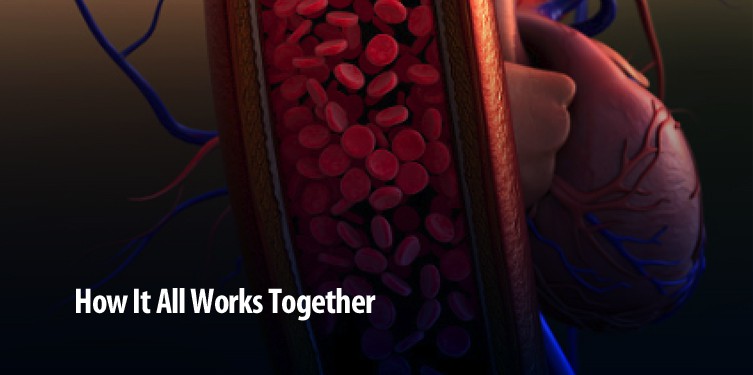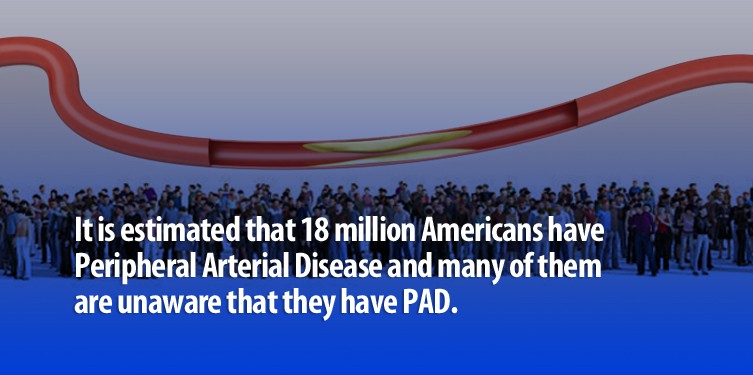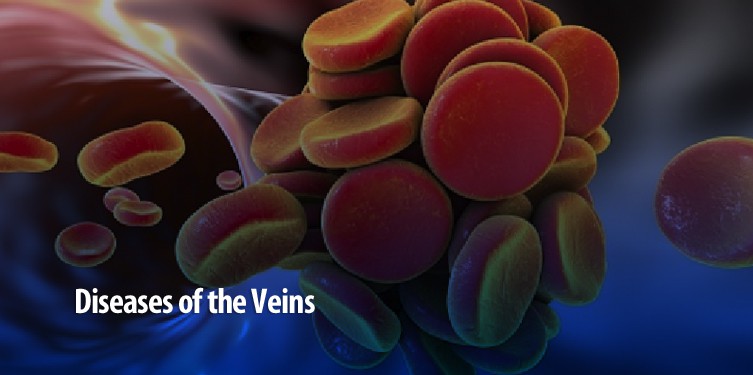Your Heart, Arteries & Veins Are Interconnected
The human body consists of many different organs, but the most important is your heart. It is also the most worked organ in your body. Think about this – your heart starts beating in the first trimester of your mother’s pregnancy and keeps working throughout your life without a single day off. It works continuously to pump blood through the arteries and veins to reach every part of your body. It sends all of the oxygen and nutrients that your body needs to stay healthy.
The heart pumps approximately five liters of blood throughout your arteries and veins every minute of every day of your life; therefore, your heart health impacts the health of your veins and arteries. Your heart has a giant job and enormous responsibility for an organ that’s the size of a closed fist.
How Your Veins and Arteries Works Together

- ARTERIES: Simply put, arteries are blood vessels that carry blood away from your heart. The blood contains oxygen your organs need to stay healthy and to function properly. Because it is being pumped from the heart, there is a great deal of pressure. To withstand this pressure, the walls of the arteries are thicker and are more flexible than your veins, and this flexibility allows your arteries to stretch to accommodate the pressure of the heart.
- VEINS: The veins in your body are counterparts to arteries. Veins return the blood back to the heart. There is usually very low blood pressure in veins as the walls are thinner than arteries. Veins depend on the movement of your body to pump blood back to the heart. Some veins contain valves that prevent blood from traveling in the wrong direction. With age and illness, these valves can become damaged and can cause serious illness.
Artery & Vein Medical Conditions
As age sets in, it can bring a whole new set of challenges. Your body has been working 24/7 for a long period of time throughout the years of your life, and various factors and lifestyle choices can impact your health and development of medical conditions. As people approach 50 years old or greater, one of the most common medical conditions is artery and vein disease, also referred to as vascular disease.
Artery Diseases include:
- Carotid Artery Disease
- Peripheral Vascular Disease (PAD)
- Aortic Aneurysms
Carotid Artery Disease
Plaque forms on the carotid artery walls and can block blood flow to the brain. Plaque can also rupture and break off, causing a stroke or TIA. Treatments for carotid arterial disease include lifestyle changes, medication, and surgery.
Peripheral Artery Disease
Peripheral Artery Disease (PAD) is a circulatory medical condition that is very common in which the arteries narrow and accumulate plaque, which can greatly reduce blood flow over time. PAD only occurs in the arteries. The blood flow to your organs, arms and legs can be completely or partially blocked. Treatment options include lifestyle changes, medication, minimally invasive procedures and surgery.

Aortic Aneurysms
There are two types of aortic aneurysms; Thoracic and Abdominal. A Thoracic aneurysm is a ballooning in the upper part of the aorta. The most common of the two, an Abdominal Aneurysm, is an enlarged portion of the lower part of the aorta (in the stomach). Each of these aneurysms needs to be treated immediately as they are considered life-threatening. A vascular specialist will evaluate your condition and develop a treatment plan.

Vein Diseases include:
- Deep Vein Thrombosis
- Pulmonary Embolism
- Varicose Veins
Deep Vein Thrombosis
Deep Vein Thrombosis is a blood clot that forms deep in your veins. They most often occur in the lower legs or thighs. Those who live a sedentary lifestyle or are immobile are at the highest risk. Learn more about DVT risk factors, symptoms, and treatment options in our free What Is Deep Vein Thrombosis E-Book.
Pulmonary Embolism
A Pulmonary Embolism (PE) is when one of the pulmonary arteries in your lungs becomes blocked. It is most often caused by a deep vein thrombosis blood clot that travels from your legs into your lungs. A pulmonary embolism can be life-threatening if not treated as it could potentially travel up to your heart or brain — resulting in a heart attack or stroke.
Varicose Veins
Varicose Veins are veins that are twisted and bulging. The most common areas to be affected are the legs and feet. For most people, varicose veins are embarrassing and make them self-conscious; however, they don’t always pose a medical problem. However, for others, varicose veins can be indications and lead to more serious complications like chronic venous insufficiency (CVI) or venous stasis ulcers.
Maintaining Healthy Arteries and Veins – Get A Vascular Check-Up Today!
All of the above medical conditions are serious and can be life-threatening if left untreated. It is important to schedule an appointment with a vascular specialist at least once a year to ensure your arteries and veins are healthy. Remember that your body is a fine-tuned machine, each part works in conjunction with the other and if one part is not working properly then it will eventually trickle down to every other area.
As part of yearly maintenance for your health, most people schedule appointments with their physicians, and that’s great! However, very few people ever think about artery or vein health until there is a problem. Being proactive now can prevent serious complications later in life.
If you have never had a vascular screening and if you experience unexplained leg pain or leg cramps, be sure to request an expert consultation and diagnostic vascular screening from our board-certified vascular physicians. Each of our modern medical offices and vascular outpatient centers, in Maryland and Pennsylvania, provide a safe, convenient, comfortable environment, and our friendly staff helps to make you feel relaxed.


